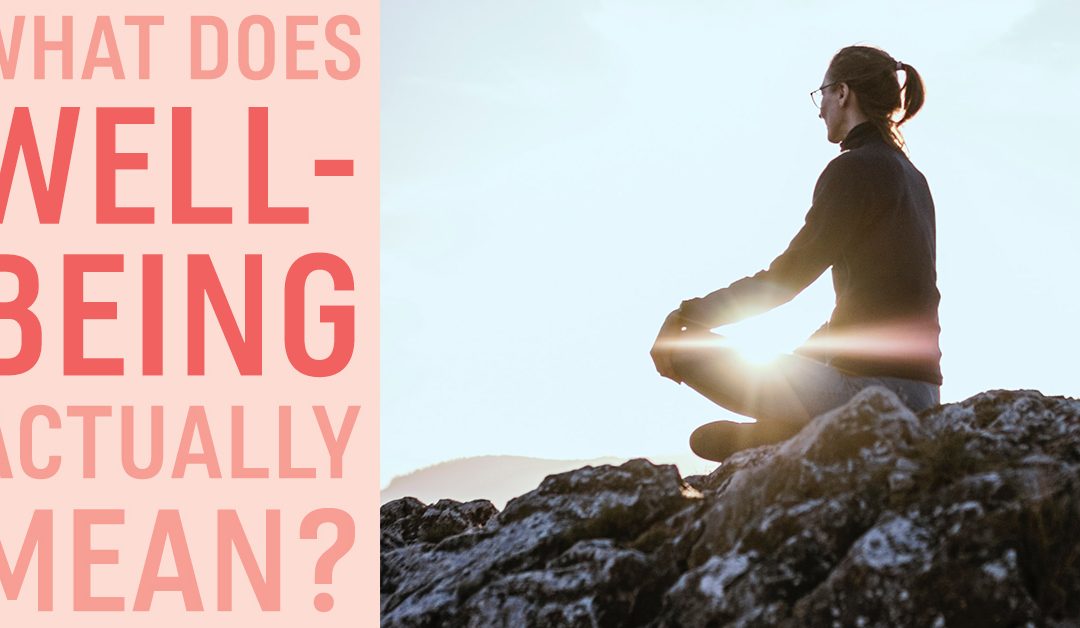It feels like one of the hottest topics landing in CEOs’ inboxes is questions around “what are you doing for your organisation’s well-being?”. The rise in a focus on well-being appears to have snuck up on most organisations. In truth, well-being has been in organisations for a very long time. It only seems more prevalent now because we are talking about it, talent demands it, and the result is organisations scrambling to apply it. Enter the creation of the Chief Well-being Officer (CWO).
Long before the creation of the CWO officer role, there were (and still are) individuals and teams within workplaces ensuring employee safety.
We are looking at you, all the OWHS agents, managers, and officers.
We see you and know you have been speaking about well-being for a long time. The truth is, OWHS teams have always been educated in more than just industrial safety and risk. OWHS teams have always embraced other employee safety domains but are often not heard. Rarely are they invited to contribute toward a more comprehensive organisation-wide well-being strategy.
We believe they have been facing an uphill battle. Their challenge? Getting a seat at the table and have their voices heard.
With an uprising in the well-being movement, organisations now are integrating well-being as part of a people-driven strategy, and so they should. With large amounts of positive research surfacing each day, it is clear that embracing well-being in the workplace is critical to individual, team, and organisational health and prosperity. However, there is a lot of confusion about what well-being is.
We see most organisations choosing valid and worthy initiatives, normally attached to a one-per-month calendar of ‘events’ to celebrate as a whole organisation. While we commend this as a healthy step in the right direction, the truth is that it does little to bring about lasting positive change. Think about it, how often does an organisation continue the theme or intent of the nominated initiative after the day it is celebrated? The answer is very rarely.
It’s no one’s fault. We see organisations looking around for help and doing the best they can. We see mixed unfinished messages landing on employees’ laps, leaving them interested but confused.
Organisations should be looking at the foundational base on which to build their well-being strategy. Think of it like this: you have two banks of a river. On one side of the bank are the organisation’s aspirations and goals. On the other are your employees, charged with attaining the goals. All the employees jump onto a log raft. They work together to reach the other side of the bank (the goals and aspirations). As they start to paddle, you think they may be thirsty, so you throw onto the raft a drinks machine. The raft starts to sink, but they are happy and keep paddling. Then you notice they are slowing down. They may need a break. You throw on a pingpong table and 6 bean bags. They have no room to sit, but they have to keep paddling. This is not working, for some reason they are still not managing to reach the other side of the bank. They are becoming distressed. You give them all yoga mats to relax on and take time out. The only thing is, they don’t have the space to roll out their mats, nor do they have the time because if they stop paddling, the raft will sink. They are exhausted, and they still cannot reach their goal. Result = Burnout and distress.
Sound familiar? While all the initiatives come with good intent, they do not always help teams to reach their goals. In some cases, the initiatives can negatively impact their well-being. A strong foundation is the key to success. Imagine if we replaced the log raft with a cruise liner. The cruise liner represents a foundation, systems, tools, process, and expectations of how to reach the other side. The team have more room, capacity, and structure to assist them in moving toward the goals. The team are no longer struggling to just survive. They can now clearly articulate what they need and where they need to go to thrive. They have space to use their strengths.
We cannot all go change the environment though, sometimes we cannot upgrade from a log raft to a cruise liner.
What do we need to do?
- Understand who your employees are.
- Articulate a clear employee-driven Employee Value Proposition for clarity, vision, and autonomy.
- Keep doing what the OWHS teams have been doing for a long time and build a safety culture.
- This means increasing awareness, conversations, and access to Physical, Psychological, Emotional, Environmental, Social, and Financial safety for all employees.
- Consider the whole person. Well-being isn’t just a yoga mat. Each employee is different and may require context and inclusive considerations.
- Create space.
- Integrate your well-being strategy into everyday activities. Not just once a month or once a year.
- Review your perks and look at what adds value, not what ticks a box. Keep perks as perks and align well-being initiatives to elements of safety.
- Ensure your employees have access to an Employee Assistance Program (EAP). And as a side note, access to an EAP should not be a ‘perk’ or benefit. It should be a standard offering, just like superannuation.
We are very passionate about well-being here at Red Wolf Group. This is why we leverage data and tools like PI to help individuals and others learn more about their drivers and needs. If you want to talk to us about well-being strategies or any other topic, reach out to Red Wolf Group today!
